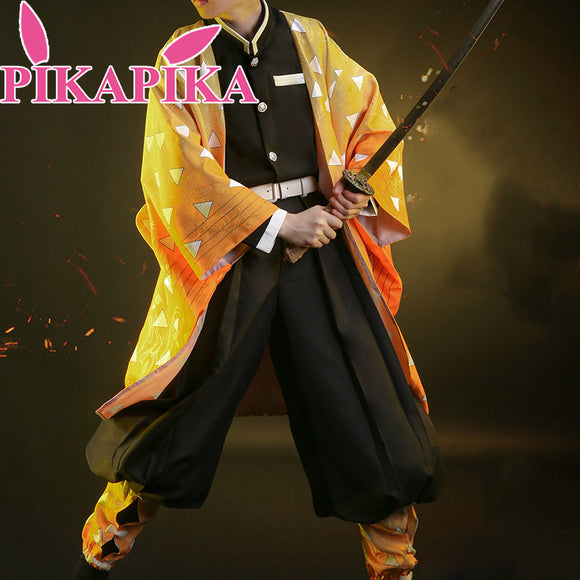Little Known Ways To Hemp Leaf Pattern On Tanjiro Clothes Your Business In 30 Days
Tanjiro clothes are a great choice when you are fond of Japanese clothes. The earrings that are worn by him feature images of the midday sun. The earrings compliment his reddish hair, and they complement the power of his katana with similar power of scorching and destroying demons. These earrings are part of his brand new style. They’re designed to complement his Katana.
Hemp leaf pattern
The hemp leaf design on tanjiro clothing is similar to the design of the asanoha (hemp leaf) on Japanese clothes that dates back to the Heian period. Although the design is similar but it has distinct characteristics. This article will discuss the history and significance of this pattern in Japanese culture. We will also look at the latest example of this design, where the demon is portrayed wearing an otaku with a hemp-patterned kimono.
Hemp grows straight up to the sky. The hemp leaf pattern was traditionally worn by parents to wish their newborn children a healthy growth. Parents also dressed their babies in asa-noha-patterned clothes. It can be found on both men and women’s clothes and is a common motif on kimono. The most well-known version of this pattern is known as yabure asa-noha and is usually accompanied by a broken leaf pattern.
The hemp leaf is one of the most popular traditional cosplay costumes. This design is inspired by the shape and purpose of hemp leaves and is utilized in a variety of Japanese costumes. Hemp leaf patterns are found on traditional kimono cloths as also on wooden masks designed by cosplayers like geta. These masks are usually available in light or pink hues. Shueisha trademarked the design despite the widespread use of hemp leaf patterns in cosplay. Although they did not contest the trademark, it was not granted to Zenitsu Akatsua, pikapikacos Tanjiro Kamado, and Giyu Tomioka.
Tanjiro clothing usually has the hemp leaf pattern. These are worn by children of the Kamado family. In some instances, women of the Kamado family wore the same hairstyles, but their styles were adapted to the current fashion. They cut their hair shorter and were not like Tanjiro. Before they wore zori, which was to keep lice from entering their bodies.
Kimono and Kuruma are two other kinds of Japanese clothing. The kimono Shigeru was wearing may be a natural hemp colour but it could also be the result of a chemical process. The hemp color is not as dye-able as green, and it has to be dyed in two separate baths. This is no longer true. The Hemp leaf pattern is very popular on clothes, and Shigeru might have used hemp-based colors that are natural.
The haori is an elegant Japanese dress, which is thigh-length, and tanjiro cosplau hip-length. The patterns of the haori are based off characters from the Kimetsu no Yaiba manga and anime series. The haori’s pattern is symbolic of Tanjiro’s hardened head and tanjiro robe is a reference to his fighting style. A second traditional Japanese outfit that is referred to as the koyo (sword) in the manga, is called the Kimono.
Another variant of the hemp leaf pattern is the hakama. This kimono design gained a lot of popularity in the mid-Edo time period. The pattern has been worn by the Kamado family for years before it became fashionable. It is a symbol of prosperity, unbroken continuity, and a bright future for their children. Hakama is a more traditional Japanese style of clothes.
In addition to the Hemp leaf pattern on tanjiros hemp leaf pattern found on kimono dresses could be a reference their Koyo or kabuki. In the same way, a hemp leaf pattern is a traditional symbol of prosperity and wealth. Hemp leaves symbolize the earth in Japanese culture. Thus hemp leaf patterns are often associated to the earth.
Black and green checkered pattern
The checkered pattern on Tanjiro Kamado’s Kimono is the most well-known character in the series. Tanjiro is a boy on a hunt to find the Demon Slayer. The pattern on his haori is called Ichimatsu, and was named after the famous Kabuki performer in the 17th century.
While Shueisha was successful in trademarking the attire of Demon Slayer characters, they were unsuccessful in their bid to patent the green and black checkered pattern that Tanjiro wears. The patent office rejected the patent due to the Tanjirou Kamado design is too similar to. Shueisha, publisher of the Demon Slayer manga, believes that the checkered pattern on Tanjiro’s clothes serves an unique function.
Tanjiro wears black and green checkered Hanten , layered over three noragi Kimonos. He also has straw boots and unbleached kyahan. He also wears a blue scarf around his neck. Tanjiro has long hair with lots of flyaways, and a scar on his forehead.
In addition to being referred to as an “Sumiyoshi”, Tanjiro is often associated with the Demon King, Muzan Kibutsuji. The Demon King is the most powerful demon among the Twelve Kizuki, was the leader of a group which included twelve of the most powerful demons. While Tanjiro was the lowest rank, he was capable of competing with the twelve demons that included the legendary Rui.
The black and green checkered pattern on Tanjiro’s clothing is very reminiscent of a contemporary kimono, but the kimono that is black and green is an exception. Although the majority of Tanjiro’s kimonos are below the ankle, the most popular kimonos were either mid-calf or ankle-length, pikapikacos with rectangular sleeves. These garments required lots of fabric to create.
Although Tanjiro’s outfits are usually decorated with a green checkered pattern The colors are typically neutral. Tanjiro will look more dangerous when he wears an edgy checkered pattern in black and green on his clothes. The pattern on his clothes reflect his personality. Tanjiro is a Demon Slayer and an empath. He is compassionate and kind by nature, but is a determined, independent fighter. Additionally, He has an intense sense of duty, and is loyal to those around him, including his younger sister.
 The checkered black and green pattern on Tanjiro’s clothes can be an indication of his increased awareness. Tanjiro’s skill in using water is a result of his education in the Mugen Train Arc. This skill gave him the ability to master multiple forms simultaneously, resulting in a whiplash effect. In addition, Tanjiro was able to master Hinokami Kagura forms while training at the Swordsmith Village as well as during the Hashira Training Arc. These forms were not only what he performed in the Mugen Train Arc but he was also able to execute them, and he also admired Yoriichi Takukuni’s Hinokami Kagura. Both of these forms helped him to defeat Enmu and Rui. Both forms were particularly striking because they had different angles and wrist movements.
The checkered black and green pattern on Tanjiro’s clothes can be an indication of his increased awareness. Tanjiro’s skill in using water is a result of his education in the Mugen Train Arc. This skill gave him the ability to master multiple forms simultaneously, resulting in a whiplash effect. In addition, Tanjiro was able to master Hinokami Kagura forms while training at the Swordsmith Village as well as during the Hashira Training Arc. These forms were not only what he performed in the Mugen Train Arc but he was also able to execute them, and he also admired Yoriichi Takukuni’s Hinokami Kagura. Both of these forms helped him to defeat Enmu and Rui. Both forms were particularly striking because they had different angles and wrist movements.



